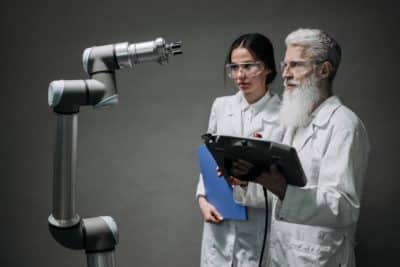Thanks to advancements in digital healthcare technologies such as AI, 3D printing, VR/AR, nanotechnology, and robotics, medicine’s future is taking shape right before our eyes. We must become familiar with the latest creations to manage the control of technology, not the other way around. Medicine’s future lies in collaborating with technology and clinicians like Clinical Ink to embrace changes in the healthcare industry, ensuring that we remain relevant for years to come.
Nobody has the power to stop technology from progressing. However, the power of digital technologies will eventually impact every aspect of our life. As a result, we must keep our minds open to the prospect that technology will alter the world as we know it. Technology has the potential to assist us in living healthier lives in healthier societies.
In healthcare and medicine, digital technology can turn ineffective healthcare systems into appropriate ones, deliver cheaper, faster, and more effective illness solutions, and level the playing field between experts and medical patients. Let us now explore some of those advancements to see for yourself how technology is changing the health sector.
IMAGE: PEXELS
Artificial Intelligence
Artificial intelligence, in my opinion, can transform healthcare. AI algorithms can mine medical records, build treatment plans, and create medications faster than any other actor in the healthcare ecosystem, including doctors.
Managing Staff
Natural disasters, industrial accidents, seasonal illness, and even a growing population might all put a strain on hospital capacity and resources. Giving care team members clinical mobile laptops that allow for real-time contact and cooperation with geographically dispersed colleagues via text, audio, or other data-sharing methods will enable them to boost personnel without increasing their physical presence in each institution. These devices also aid clinician efficiency by allowing access to patient records at the point of care, allowing for real-time updates without the need for a trip to the nurses’ station.
Robotic Surgery
It was initially thought that the concept of robots doing the surgery was science fiction. However, it’s commonplace nowadays; human skill only goes so far when reaching hard-to-reach parts of the body. Robotic hands and tools can go where human hands and instruments can’t, resulting in more successful surgery.
Because of robotics, several surgeries have become less intrusive. Today’s robots are capable of much more than just performing procedures. They assist hospitals in saving money by lowering labor costs. Robot aides are now performing routine duties such as cleaning and delivering food to patients’ rooms.
Moreover, nowadays there are some augmented reality surgical navigation systems that increase surgical accuracy and confidence by enabling physicians to find and reach their target destination more quickly – without the expense, footprint, and setup time of conventional navigation systems and robots
Virtual Assistance
Virtual healthcare allows patients to communicate with their doctors without leaving their homes. People can submit updates to their healthcare providers using videoconferencing technology and wearable health and fitness trackers. It also eliminates the need for people to leave their homes, allowing healthcare providers to see more patients per day while maintaining high-quality care.
Data Accessibility
The capacity to store and access data has been one of the most significant benefits of the digital revolution. Healthcare providers can now access patient information from any location. Furthermore, the intranet and internet have enabled healthcare practitioners to quickly share medical data, leading to more efficient patient care.
Augmented Reality
Unlike virtual reality, Augmented Reality allows users to maintain contact with reality while receiving information as quickly as feasible. Because of these distinguishing characteristics, both on the receivers’ and medical practitioners’ sides, AR is becoming a driving force in the future of healthcare.
For medical practitioners, it might help medical students prepare for real-world procedures while also allowing current surgeons to improve their skills. In addition, medical students now have access to realistic and detailed computer simulations of human anatomy, allowing them to study without using real people.
Technology-assisted healthcare is as tricky as it appears to be. Healthcare institutions must address cybersecurity risks as a result of digitization. In addition, technological advancements necessitate significant investments, exacerbating the industry’s rising expenses.
On the other hand, technology can improve patient care while also lowering total costs if used correctly. With an aging population, growing costs, and increased illness complexity, technology offers a feasible avenue for the healthcare industry to achieve exponential development.
IMAGE: PEXELS
If you are interested in even more technology-related articles and information from us here at Bit Rebels, then we have a lot to choose from.


COMMENTS